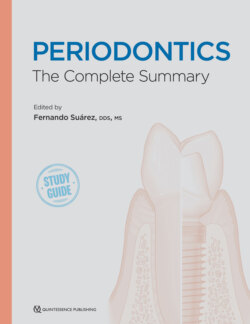Читать книгу Periodontics - Fernando Suarez - Страница 69
На сайте Литреса книга снята с продажи.
Treatment outcomes
ОглавлениеOn the other hand, prediabetics or well-controlled diabetics are not at additional risk for periodontal disease.35 The level of glycemic control has an impact on the outcome of the treatment. A favorable response is observed in well-controlled diabetics, similar to nondiabetic controls.36
The immunologic response of diabetics to bacterial plaque is similar to nondiabetics in terms of IgG levels, although differences can be observed in regard to the levels of E-selectin, vascular cell adhesion molecule-1 (VCAM-1), adiponectin, and plasminogen activator inhibitor-1.37
With regard to the effect of periodontal treatment on diabetic control, nonsurgical periodontal therapy can reduce the hemoglobin A1c (HbA1c) levels. However, this reduction may be considered insignificant, and it is not stable over time. The magnitude of the reduction is higher in Type 2 diabetics compared with Type 1 and when antibiotics were prescribed as an adjunct to nonsurgical treatment. Although the reduction of HbA1c following periodontal treatment reported from several studies can vary, based on the current evidence, it is anticipated to correspond to 0.3% to 0.4% less than the original value38,39 (Box 4-3).
BOX 4-3 Link between diabetes and periodontal status
